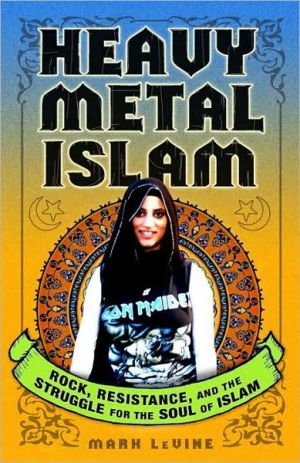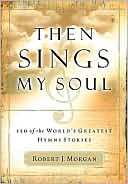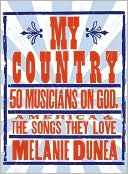Heavy Metal Islam: Rock, Resistance, and the Struggle for the Soul of Islam
“We play heavy metal because our lives are heavy metal.”\ —Reda Zine, one of the founders of the Moroccan heavy-metal scene\ “Music is the weapon of the future.”\ —Fela Kuti\ An eighteen-year-old Moroccan who loves Black Sabbath. A twenty-two-year-old rapper from the Gaza Strip. A young Lebanese singer who quotes Bob Marley’s “Redemption Song.” They are as representative of the world of Islam today as the conservatives and extremists we see every night on the news. Heavy metal, punk, hip-hop,...
Search in google:
“We play heavy metal because our lives are heavy metal.”—Reda Zine, one of the founders of the Moroccan heavy-metal scene“Music is the weapon of the future.”—Fela KutiAn eighteen-year-old Moroccan who loves Black Sabbath. A twenty-two-year-old rapper from the Gaza Strip. A young Lebanese singer who quotes Bob Marley’s “Redemption Song.” They are as representative of the world of Islam today as the conservatives and extremists we see every night on the news. Heavy metal, punk, hip-hop, and reggae are each the music of protest, and in many cases considered immoral in the Muslim world. This music may also turn out to be the soundtrack of a revolution unfolding across that world. Why, despite governmental attempts to control and censor them, do these musicians and fans keep playing and listening? Partly, of course, for the joy of self-expression, but also because, in this region, everything is political. In Heavy Metal Islam, Mark LeVine explores the influence of Western music on the Middle East through interviews with musicians and fans, introducing us young Muslims struggling to reconcile their religion with a passion for music and a desire for change. The result is a revealing tour of contemporary Islamic culture through the evolving music scene in the Middle East and Northern Africa. Heavy Metal Islam is a surprising, wildly entertaining foray into a historically authoritarian region where music just might be the true democratizing force. The New York Times - Howard Hampton Heavy Metal Islam turns the notion of irreconcilable differences between Islam and the West on its head, appealing to the universality of youth culture as "a model for communication and cooperation" in the Internet age…The punch line of LeVine's informative, valuable and moderately mad book is twofold: this conscientious anti-imperialist has written a swell tract in favor of large-scale cultural imperialism—a Marshall Amps Plan—and his program is undoubtedly the first to enlist death metal as the spearhead of a new Peace Corps(e).
Introduction Rock and Resistance in the Muslim World 11 Morocco: When the Music is Banned, the Real Satanism Will Begin 212 Egypt: Bloggers, Brothers, and the General's Son 603 Israel/Palestine: Hard Music in an Orphaned Land 1064 Lebanon: Music and the Power of Blood 1395 Iran: "Like a Flower Growing In the Middle of the Desert 1726 Pakistan: Shotguns and Munaqqababes Along the Arabian Sea 211Epilogue: Which Way to the Future? 253Acknowledgments 211Bibliography 281Index 291
\ Howard HamptonHeavy Metal Islam turns the notion of irreconcilable differences between Islam and the West on its head, appealing to the universality of youth culture as "a model for communication and cooperation" in the Internet age…The punch line of LeVine's informative, valuable and moderately mad book is twofold: this conscientious anti-imperialist has written a swell tract in favor of large-scale cultural imperialism—a Marshall Amps Plan—and his program is undoubtedly the first to enlist death metal as the spearhead of a new Peace Corps(e).\ —The New York Times\ \ \ \ \ School Library JournalAdult/High School\ In the 1970s, heavy metal acts like Black Sabbath and Iron Maiden created dark, violent music that was as much political and social protest as it was adrenaline-laced sound energizing the mosh pit. LeVine looks at the current heavy metal, punk, and hip-hop scenes of the Middle East in this way, presenting the backgrounds of each and exploring the social import of their messages. With lyrics crying for political and social change, this music carries the screams of angry youth, but angry youth who, for the most part, still regard themselves as devout Muslims. Each chapter examines a different nation and its music scene. Although it's not surprising that the most active centers are the more Westernized nations like Morocco and Israel, the most fascinating sections are those that cover places like Iran, where the music is not just looked at with suspicion, but often considered illegal. Many of the musicians are in their late teens and early 20s. Unfortunately, LeVine does a poor job of describing the music itself, throwing out terms like "grindcore" and "black metal" without defining them. Readers already knowledgeable about different forms of heavy metal won't have a problem with this, but those coming from the outside might find all the undefined labels a little confusing. LeVine does, however, provide a useful list of Web sites that provide samples of the music; a companion audio CD is sold separately. It becomes obvious that the author sees these musicians as a force for positive change. Although a journalistic approach might make this work more convincing, it's still a fascinating read about a unique subculture.-Matthew L. Moffett, Pohick Regional Library,Burke, VA\ \ \








